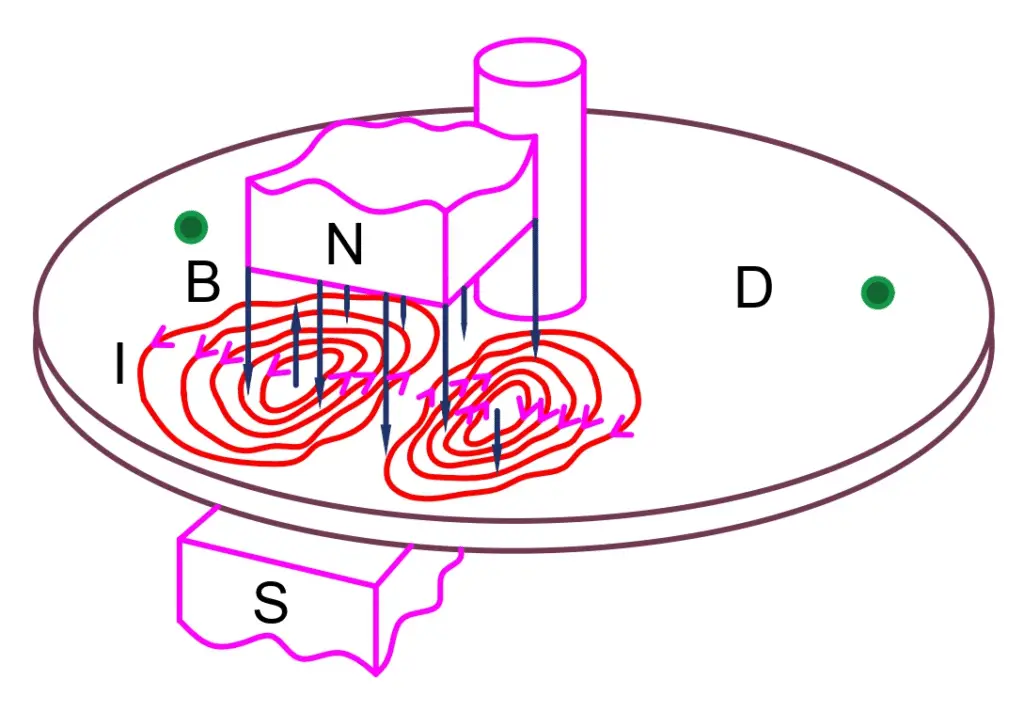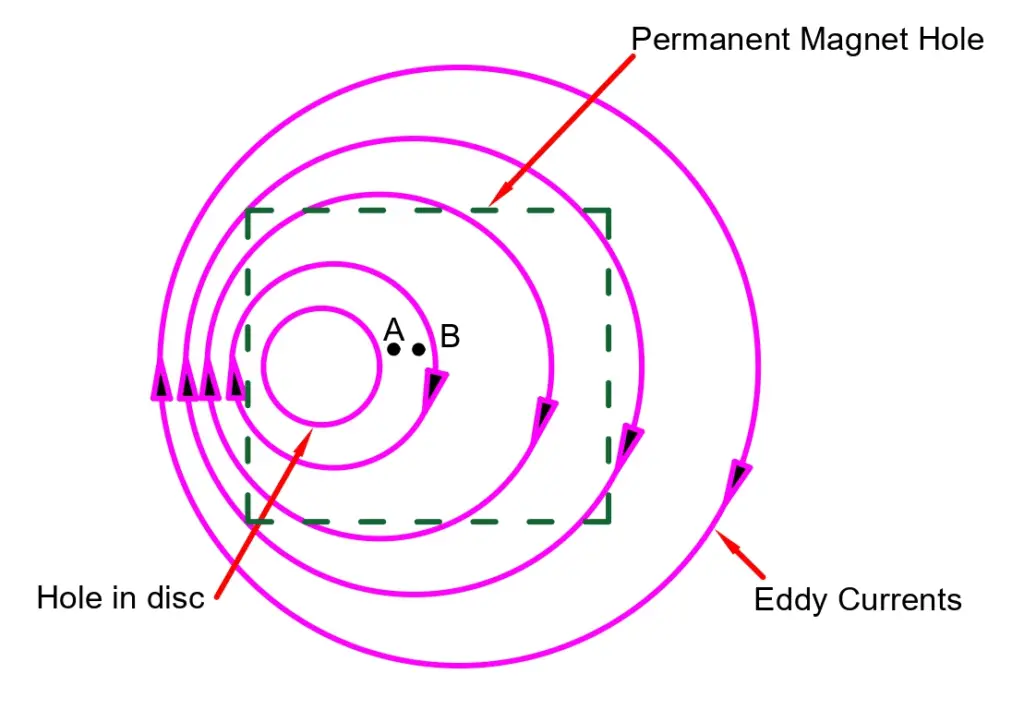Creeping in the energy meter is a phenomenon where the aluminum disc of the energy meter keeps rotating in the case of no current through its current coil. Thus, the energy meters record energy even when there is no current flow through the meter.
In other words, creeping is a kind of error that happens when the voltage is applied to its pressure coil, but the meter is not connected to the load, i.e- there is no current through its current coil.
There are various reasons for creeping in energy meters. Some of the reasons are- electromagnetic interference, excessive friction, vibrations, stray magnetic field, and faulty connections.
In the light load condition, the creeping increases the speed of the disc and causes measurement errors in energy metering. The excessive friction cause creeping error. Even though the driving torque is absent at no load, the disc rotation is caused by the additional torque provided by the compensating vane.
Creeping in energy meter leads to erroneous energy measurement that causes overbilling for the consumer. Therefore, after manufacturing of energy meter, it is tested for creeping error to ensure that the meter should not record energy under normal operating conditions. Also, energy meters are periodically tested to ensure no error on account of creeping.
Prevention of Creeping in Energy Meter
The creeping in the energy meter cause inaccurate billing and financial loss. Therefore, it is a must that there should be no creeping in the energy meter. The aluminum disc of the energy meter should not rotate at all if the load current does not pass through its current coil.
We can prevent the creeping in the energy meter by drilling two diametrically opposite holes in the disc of the energy meter.

When the hole reaches at the edge of the pole of the shunt magnet, the rotating disc comes to rest. Thus, the disc can take only half rotation, and creeping is limited.
We can understand the above phenomenon by considering the figure below.

For sake of better understanding, only one hole of the disc is shown in the above pic. The black color dotted lines show the edge of the pole. Let this pole be the south pole. The eddy current starts flowing in a clockwise direction when the hole comes under the pole. Here, the eddy current induces in the disc because of a change in the magnetic flux. Point A is the center of the eddy current.
This change in the magnetic flux cause formation of the pole in the disc whose south pole faces the pole of the shunt magnet. The south pole of the shunt magnet and the south pole of the induced magnet repel each other because of their similar poles. This phenomenon balances the over-friction compensating torque. Thus, with this arrangement, creeping is restricted to half the revolution of the disc.
In absence of the hole in the disc, the center point of the eddy current lies at point B which coincides with the pole center of the shunt magnet. In this condition, the magnetic pole due to eddy current, and the shunt magnet pole are in line and no repulsion force is produced.
Therefore, holes drilled in the disc cause two pole centers apart and it eliminates the problem of creeping in the energy meter.